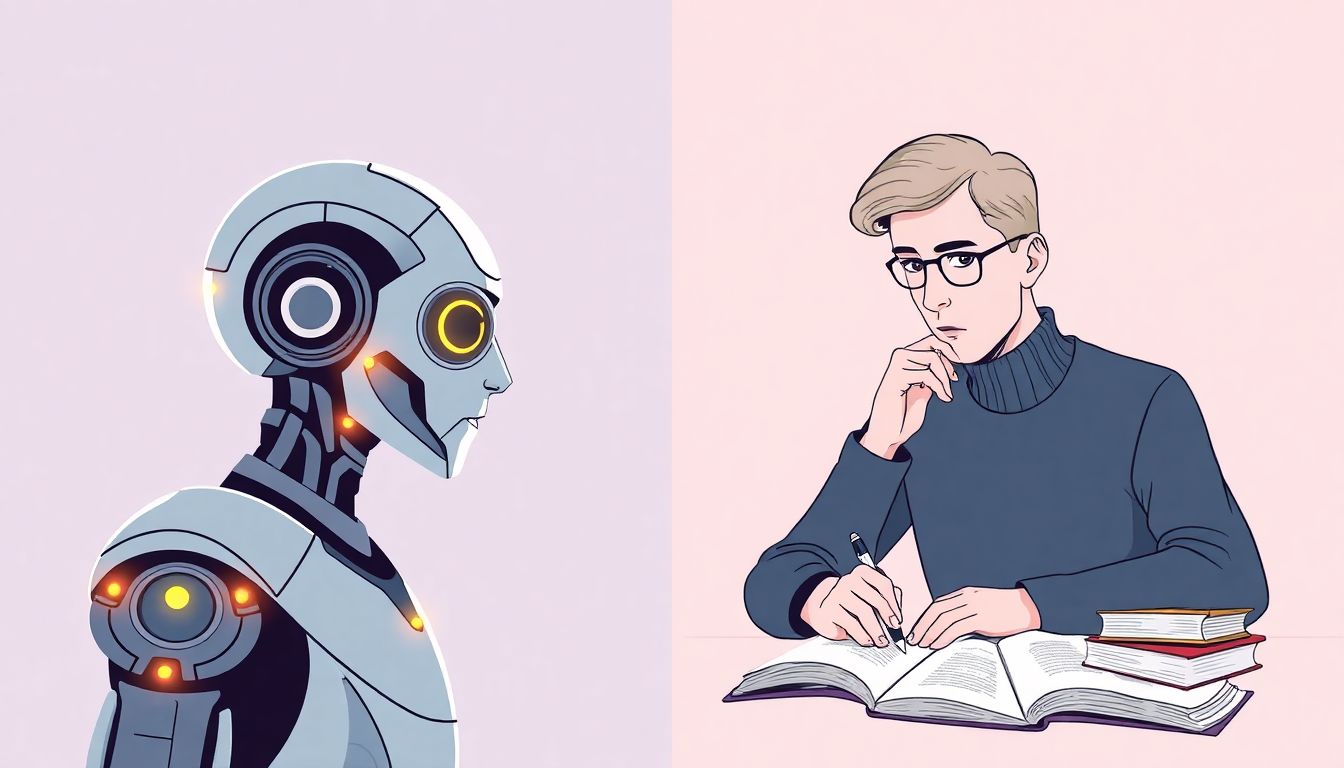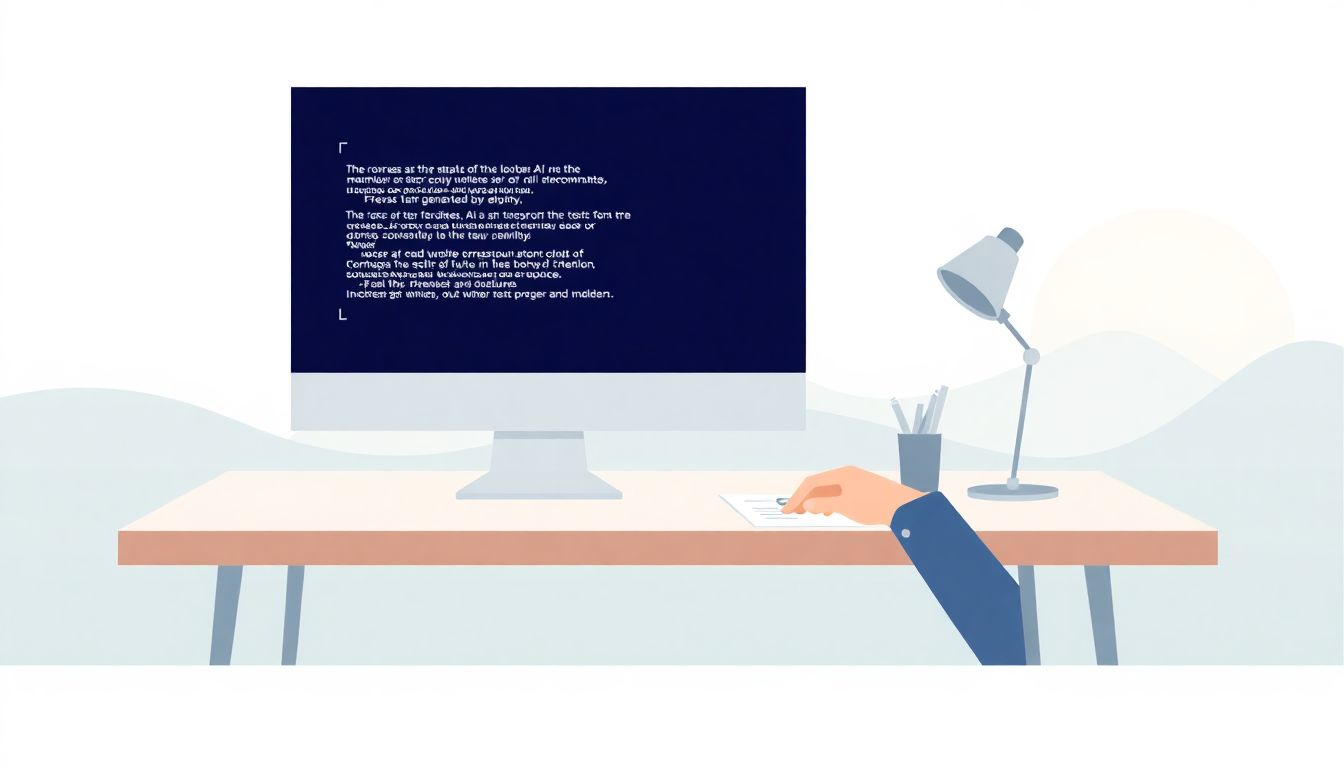If you’ve ever debated whether to rely on ChatGPT or a human copywriter, you’re not alone. Many people wonder which one truly delivers better content. It’s a valid concern, considering the rise of AI in the writing world and how it might affect creativity and quality.
Stick with me, and I’ll break down the key differences between these two options. By the end of this piece, you’ll have a clearer idea of when to choose AI for fast and efficient writing or opt for the unique insights that only a human can provide.
We’ll explore everything from capabilities to creativity and even cost comparisons. Let’s dive into this fascinating comparison and help you make the best choice for your content needs!
Key Takeaways
- ChatGPT generates content quickly and efficiently, making it ideal for fast, high-volume writing tasks.
- Human copywriters excel in creativity, emotional intelligence, and understanding complex topics, providing unique insights.
- Use ChatGPT for straightforward content like drafts, FAQs, or ideas, especially when speed is essential.
- Human writers shine in nuanced tasks that need empathy, storytelling, and a strong brand voice.
- ChatGPT is cost-effective for bulk content, while human writers tend to charge more based on complexity and expertise.
- Quality can differ; ChatGPT may lack depth, whereas human writers often offer richer, more engaging content.
- Creativity is crucial; human writers can connect emotionally, while AI struggles to generate truly innovative ideas.

ChatGPT vs. Human Copywriters: Key Differences Explained
When it comes to copywriting, comparing ChatGPT to human copywriters reveals some significant differences.
ChatGPT excels in generating content quickly and efficiently, making it a go-to tool for many businesses.
On the other hand, human copywriters bring creativity, emotional intelligence, and an understanding of complex topics.
Understanding these distinctions can help you decide which option is best suited for your content creation needs.
Understanding the Capabilities of ChatGPT
ChatGPT is powered by advanced natural language processing technology.
This enables it to generate coherent and contextually relevant text based on user inputs.
Its primary strength lies in its ability to produce content at an impressive pace.
This is particularly useful for tasks like blog posts, product descriptions, or social media updates.
Some key capabilities include:
- Generating ideas for content themes and topics.
- Creating drafts from scratch or improving existing content.
- Personalizing messages based on audience needs.
When using ChatGPT, consider the following prompts to maximize its potential:
- “Generate 10 blog post ideas about sustainability for a marketing blog.”
- “Write a product description for a high-tech kitchen appliance, highlighting its unique features.”
- “Create a one-minute social media post that engages users on a tech gadget launch.”
The Unique Strengths of Human Copywriters
Human copywriters possess qualities that AI currently cannot replicate.
They understand emotional nuances and cultural contexts that are crucial in resonating with a target audience.
Creativity plays a major role in their writing, allowing for storytelling and unique perspectives.
This is particularly important in areas like brand storytelling or complex subject matter that requires deep expertise.
The innate ability to connect with readers through tone, style, and humor sets human writers apart.
Some of the core strengths of human copywriters include:
- Understanding audience emotions and motivations.
- Crafting original narratives that capture attention.
- Adapting content to fit specific brand voices effectively.
When to Use ChatGPT for Content Creation
Using ChatGPT can be a game-changer, especially when you need quick content generation.
Ideal scenarios include creating drafts, brainstorming ideas, or producing high-volume content.
Businesses often leverage ChatGPT when speed is critical and the topic is straightforward.
Here are some situations where using ChatGPT might be beneficial:
- Generating large volumes of content for email marketing campaigns.
- Creating first drafts to streamline the writing process.
- Responding to frequently asked questions on websites or social media.
To make the most of ChatGPT, try these prompts:
- “List 10 FAQs about your product and provide concise answers.”
- “Draft an introductory paragraph for a guide on home gardening.”
- “Generate an outline for a whitepaper on the benefits of remote work.”

Situations Where Human Copywriters Excel
Even with the emergence of AI, there are instances where human copywriters truly shine.
When it comes to nuanced content that requires an emotional touch, humans have the upper hand.
Complex tasks that involve understanding intricate ideas or sensitive topics benefit from a human perspective.
For example, writing about mental health or social issues demands a level of empathy and insight that only humans can provide.
Additionally, brand voice is crucial in establishing authenticity.
Human copywriters can adapt their style to reflect the nuances of a brand’s personality effortlessly.
Here are some situations where human writers excel:
- Creating compelling brand narratives that connect on a personal level.
- Developing content that addresses complex topics, requiring in-depth analysis or expertise.
- Writing engaging copy that requires an understanding of cultural contexts and current events.
Cost Comparisons: ChatGPT vs. Human Writers
Cost is a significant factor when deciding between ChatGPT and human writers.
ChatGPT offers a highly cost-effective solution, especially for businesses needing large volumes of content.
With subscription models and pay-per-use strategies, it can be cheaper than hiring human writers continuously.
On the other hand, human copywriters typically charge based on experience, complexity, and the project’s length.
For example, rates can vary from $0.10 to over $1.00 per word, depending on the expertise required.
Consider these points for a clearer cost comparison:
- Assess how much content you need to produce regularly and the associated costs.
- Evaluate the potential need for revisions and how that may affect overall writing costs.
- Determine whether the quality and creativity of human writers justify their higher prices for your specific content needs.
Quality Assessment: ChatGPT Content vs. Human Content
Quality is another critical aspect in the ChatGPT versus human writer debate.
While ChatGPT can generate content quickly, it occasionally lacks depth and emotional connection in writing.
Human writers, conversely, often bring a unique perspective and creativity that enhances the quality of the content.
To assess the quality of content produced, consider these evaluation points:
- Examine the clarity and engagement of the writing. Does it capture attention?
- Check for originality and depth. Is the content providing valuable insights?
- Measure the effectiveness by analyzing user reactions and conversion rates of the content.
The Role of Creativity in Copywriting
Creativity is a fundamental element that distinguishes great copy from the mediocre.
While ChatGPT can generate useful content, it often struggles with true creativity and innovative ideas.
Creative writing is all about crafting stories that resonate, connecting with people on an emotional level.
For instance, promotional content that tells a compelling story about a brand’s journey tends to engage audiences more.
To leverage creativity in your writing, use these prompts:
- “Create a heartfelt story about a brand’s origins and how it started.”
- “Draft a creative ad campaign for an eco-friendly product while emphasizing its impact on the community.”
- “Write a blog post that combines humor and insightful commentary on a trending topic in your industry.”

Future Trends: ChatGPT and the Evolution of Copywriting
The copywriting landscape is rapidly evolving, and ChatGPT is at the forefront of this change.
As AI writing tools continue to improve, they are becoming more integrated into everyday marketing strategies.
One major trend is the increasing collaboration between AI and human copywriters.
This partnership can enhance creativity while speeding up content production.
Businesses are likely to adopt a hybrid approach, using AI to generate first drafts and humans to add the finishing touches.
Here are some notable future trends to keep an eye on:
- Greater personalization in content as AI learns more about audience preferences.
- Enhanced natural language generation capabilities, making AI outputs sound even more human-like.
- The rise of AI-assisted creative brainstorming sessions that merge human ideas with machine suggestions.
Consider exploring these prompts to harness future trends with ChatGPT:
- “Generate a list of emerging trends in digital marketing for 2024.”
- “Draft a content strategy integrating AI tools for a new product launch.”
- “Create a vision statement for a future-focused company that embraces AI in its workflow.”
FAQs
ChatGPT excels in generating quick content and handling repetitive tasks, while human copywriters bring creativity, emotional insight, and the ability to connect with audiences on a deeper level.
ChatGPT is best used for generating drafts, brainstorming ideas, or creating simple, factual content quickly. It’s ideal for tasks that require efficiency and volume over nuanced storytelling.
Human copywriters excel in crafting persuasive, emotionally resonant content and understanding brand voice. They can tailor messages more effectively and contribute unique creative perspectives that AI simply cannot replicate.
ChatGPT generally offers a lower cost for content generation, especially for high-volume needs. In contrast, human writers may be more expensive but provide higher quality and tailored content.
